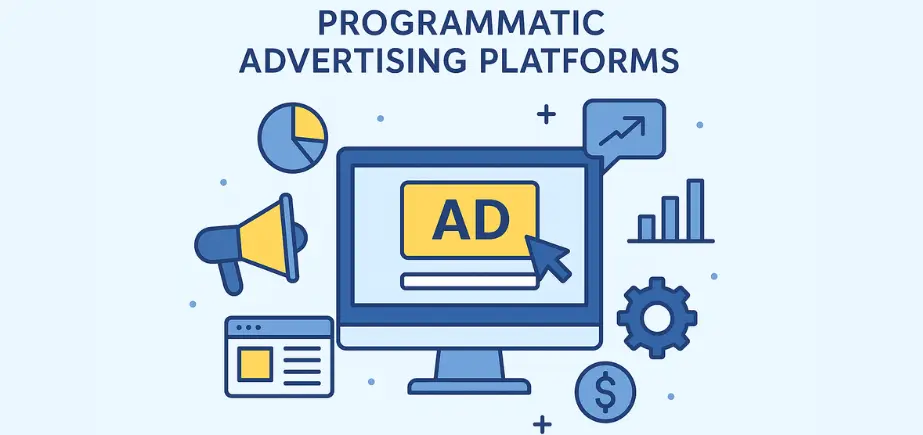Programmatic advertising has disrupted several methods by which brands purchase and sell digital advertising links, changing a manual, time-consuming system into an automated, data-rich environment. Algorithms and real-time data on programmatic platforms have given advertisers the most efficient and precise way to deliver their messages to their target audiences.
Programmatic advertising comprises more than 80% of spending on digital display advertising in the competitive and digitalized world of today, and thus it is an imperative aspect of any modern-day marketing strategy. It enables the brands to optimize the ad dollars, increase the targeting quality, and amplify their campaigns across channels and formats.
In this broad guide, we shall look at the 10 best programmatic advertising platforms that can enable you to get the maximum value out of your investment base in 2025. We will see the specifications and characteristics of each of the platforms, its advantages, and how it fits into your plan of advertising.
What Is Programmatic Advertising?
Programmatic advertising can be referred to as the automated trading of advertising space, such as the digital marketplace, with the help of artificial intelligence and real-time bidding. Rather than conventional manual negotiating and insertion orders, programmatic tools follow an algorithm and buy the ad inventory a few milliseconds after the user loads a webpage or opens an application.
Types of Programmatic Advertising:
- Real-Time Bidding (RTB): Real-time buying and selling of ad inventory via auction. Advertisers compete to win single impressions with user-level data and targeting specifications.
- Private Marketplaces (PMPs): By invitation auction, such that the top publishers sell their inventory to pre-set advertisers at agreed prices, which creates greater control and transparency.
- Programmatic Direct: An advertiser-publisher direct relationship in which reservations of inventory at fixed prices are made and inventory sold, and both automation and guaranteed placements are incorporated.
Key Features to Look for in a Programmatic Advertising Platform
Since the programmatic advertisement tools have to be analyzed, the following is the list of features, which are to be considered in detail, as they impact the effectiveness of the campaign and the ROI significantly:
Real-Time Bidding Capabilities:
It should be able to offer additional complex RTB capabilities and enable customized bidding strategies, frequency suppression, and pace rate optimization.
Advanced Audience Targeting:
Find platforms or tools that can have particular targeting, like granular demographic, behavioral, situationally relevant, and look-alike targeting audiences, along with custom audience creation capability.
Omnichannel Support:
Ensure that all the ad formats possible exist, as well as the channels display, video, native, mobile, connected TV (CTV), and the new ad formats, like digital out of home (DOOH).
AI and Machine Learning Optimization:
As campaigns will lead to being optimized automatically with the advanced algorithms based on them performing better, they will consider predicted behavior of the user and will bid, target, and create per user in real-time.
Comprehensive Analytics and Reporting:
When dashboards, attribution modeling, and third-party analytics platforms are reported as strengths, one is able to tell the ROI and the performance of the campaigns.
Brand Safety and Fraud Prevention:
Combined capabilities that allow the defense against ad fraud, brand safety, and supply chain transparency features, including ads.txt verification and third-party verification integrations.
Comparison Table of Programmatic Advertising Platforms
| Platform | Best For | Channels | Pricing | Key Features | AI Support |
| Google DV360 | Enterprise brands, YouTube advertising | Display, Video, Mobile, CTV | $50K+ min, 10-20% fees | Google ecosystem integration, premium inventory | Advanced AI optimization |
| The Trade Desk | Independent, transparent buying | All digital channels | 15-20% platform fees | Unified ID 2.0, CTV excellence | Koa AI engine |
| MediaMath | Enterprise data integration | Cross-channel campaigns | 10-25% platform fees | Brain AI, extensive data partnerships | Comprehensive ML optimization |
| Amazon DSP | E-commerce, retail advertising | Display, Video, Streaming TV | $35K+ managed, self-serve available | Shopping data, purchase intent | Amazon AI integration |
| Adobe Advertising Cloud | Creative-focused campaigns | Omnichannel | Custom pricing | Creative Cloud integration | Adobe Sensei AI |
| Xandr | Technical sophistication | Programmatic marketplace | 10-20% fees | Microsoft data integration | Advanced algorithmic optimization |
| Yahoo DSP | Brand-safe premium inventory | Mobile, Video, Native | 15-25% fees | Verizon data, telecom insights | Standard ML optimization |
| SmartyAds | Small-medium businesses, white-label | Multi-format support | $0.01 CPM+, flexible | Customizable solutions | Basic AI features |
| Amobee | Omnichannel brand campaigns | All channels + social | Custom pricing | TV-digital convergence | Predictive analytics |
| Quantcast | Audience intelligence | Display, Mobile | 15-20% fees | Real-time audience insights | AI audience modeling |
Top 10 Programmatic Advertising Platforms in 2025
1. Google Display & Video 360 (DV360)
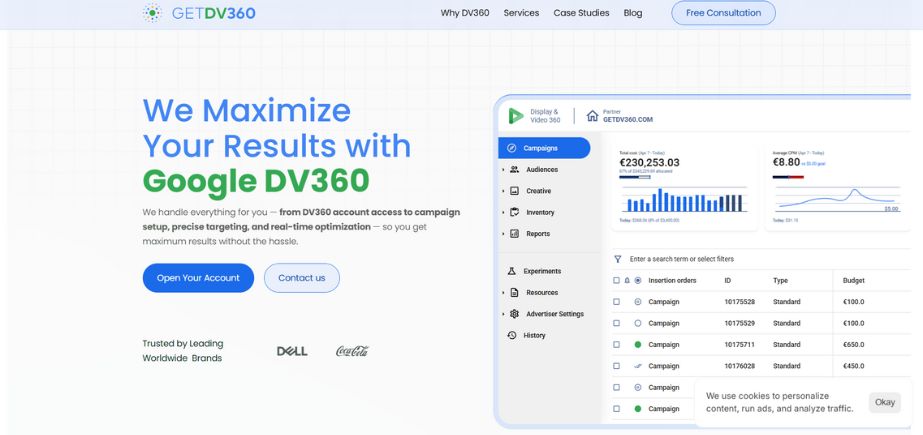
Google Display & Video 360 (DV360) is a featured end-to-end demand-side platform (DSP), which can be combined with Google’s advertising network. It enables advertisers to plan, buy, measure, and optimize digital campaigns that appear in display, video, TV, and audio media. DV360 enables sophisticated targeting, instantaneous bidding, and rights to high-quality inventory. Marketers will get high-level access to Google products data integration as well as manage their campaigns efficiently with a scalable and performance-based interface.
Key Features:
- Access to YouTube, Google Ad Manager, and AdMob inventory
- Advanced audience targeting with Google’s first-party data
- Cross-device campaign measurement and attribution
- Integration with Google Analytics and other Google tools
- Creative management and dynamic creative optimization
Pros:
- Massive reach and premium inventory access
- Sophisticated AI-powered optimization
Cons:
- High minimum spending requirements
- Complex interface requiring technical expertise
Pricing:
Minimum spend typically starts at $50,000+ monthly, with platform fees around 10-20% of media spend.
Website:
https://marketingplatform.google.com/about/display-video-360/
Suggested Read: Benefits of Using Google Search
2. The Trade Desk
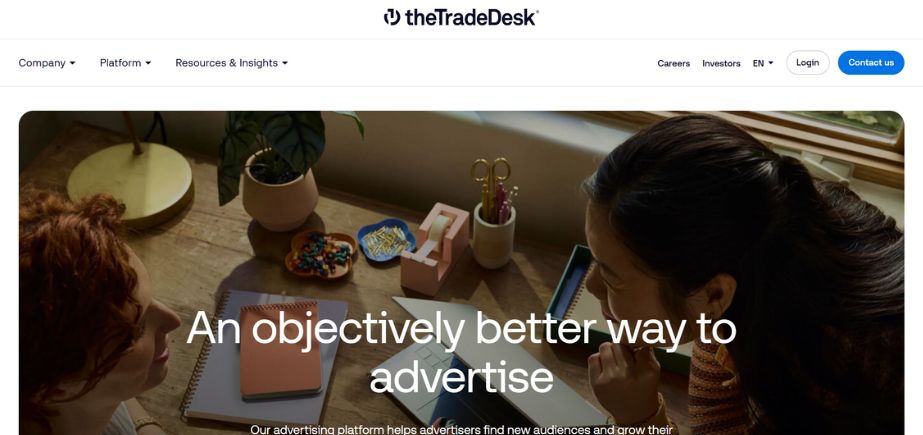
Trade Desk specializes in the provision of transparent media buying with a data-driven strategy as one of the overall leaders of the independent DSPs. It offers cross-channel programs in display, video, audio, native, and connected TV (CTV). Advertisers can also maximize targeting and bidding custom algorithms with the use of powerful AI tools and earth-shaking integrations with major data partners. Its Unified ID 2.0 initiative promotes privacy-first advertising. Programmatic advertising platforms like Trade Desk offer performance-based agencies and brands real-time analytics and control, which is why these platforms are popular with marketers.
Key Features:
- Unified ID 2.0 for cookieless targeting
- Connected TV and audio advertising capabilities
- Advanced attribution modeling and measurement
- Transparent fee structure and supply chain
- AI-powered optimization engine (Koa)
Pros:
- Platform agnostic with no conflict of interest
- Excellent customer support and training resources
Cons:
- Higher learning curve for beginners
- Premium pricing compared to some competitors
Pricing:
Typically charges 15-20% platform fee on media spend, with negotiable rates for larger advertisers.
Website:
https://thetradedesk.com
3. MediaMath
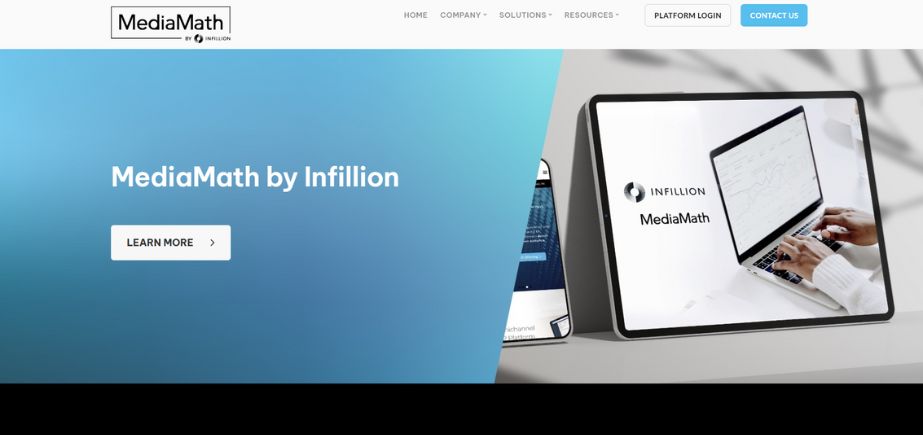
MediaMath is amongst the international programmatic advertising platforms that aims to provide personalized and measurable marketing effects. It provides an effective DSP with real-time bidding, omnichannel targeting, and audience segmentation. The open architecture of MediaMath allows easy integrations with third parties, thereby helping to use and optimize data. Characteristic of transparency and innovation, the platform established digital campaigns in times of display, mobile, video, and CTV. It is particularly loved by businesses in need of custom adaptability and innovative analytics to enable improved campaign execution.
Key Features:
- Brain AI optimization and machine learning
- Extensive third-party data marketplace integration
- Cross-channel campaign orchestration
- Advanced creative optimization tools
- Comprehensive fraud detection and prevention
Pros:
- Strong data management and integration capabilities
- Flexible pricing and contract terms
Cons:
- Interface can be complex for new users
- Limited self-service options for smaller advertisers
Pricing:
Platform fees typically range from 10-25% of media spend, with volume discounts available.
Website:
MediaMath
4. Amazon DSP
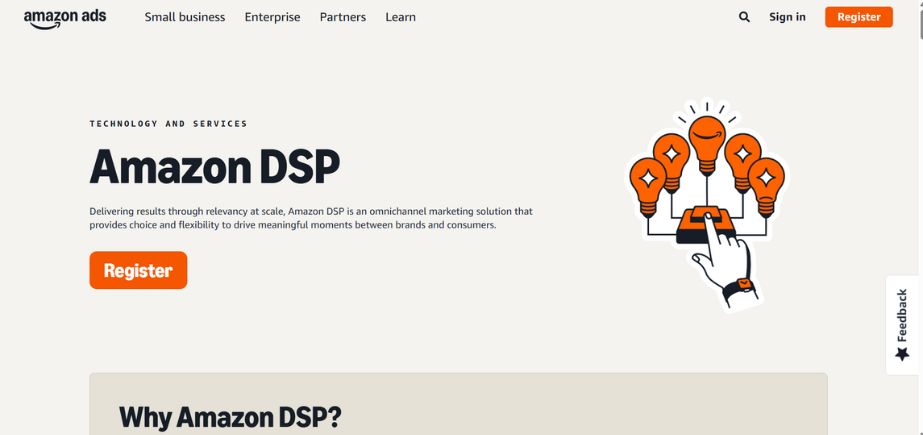
Amazon DSP allows advertisers to purchase programmatic placement of display and video advertisements using Amazon-owned and operated resources as well as external resources (third-party websites and apps). The platform also enables highly targeted campaigns on the basis of real consumer intent, leveraging the rich first-party shopping and behavior data of Amazon. It supports both self-service and managed service options. Amazon DSP is particularly useful in enhancing the success of e-commerce brands seeking to target highly converting audiences, retarget clients, and increase awareness of products within and outside the Amazon retail platform.
Key Features:
- Access to Amazon’s exclusive shopping data
- Integration with Amazon’s advertising ecosystem
- Advanced product targeting and retargeting
- Cross-device measurement and attribution
- Streaming TV and video advertising on Prime Video
Pros:
- Unique access to purchase intent data
- Strong performance for e-commerce campaigns
Cons:
- Limited inventory outside of Amazon’s network
- Less flexibility compared to independent DSPs
Pricing:
Self-service options available with no minimum spend; managed service requires $35,000+ monthly minimum.
Website:
https://advertising.amazon.com/solutions/products/dsp
Also Read: Top Amazon AI Tools
5. Adobe Advertising Cloud
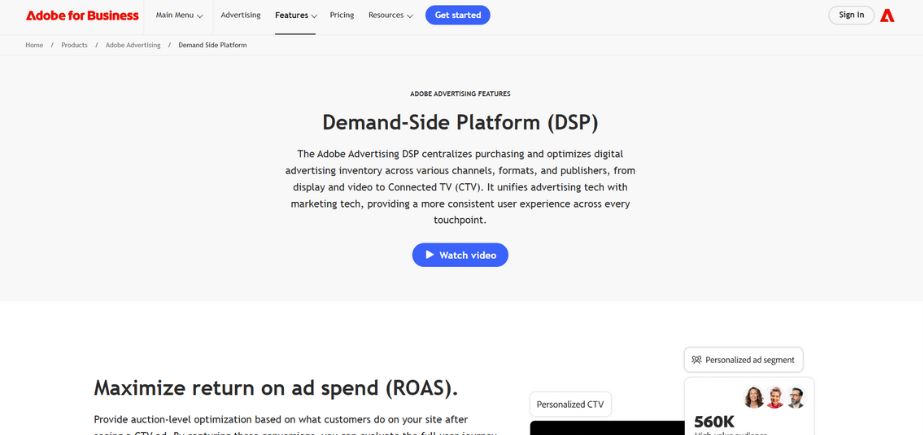
Adobe Advertising Cloud is a holistic platform to manage programmatic, search, TV, and social ads. It is complemented with Adobe Experience Cloud and offers a great depth of customer intelligence, combined with creative solutions, to present personalized campaigns that are data-driven. It helps to have transparent and automated cross-channel media buying. It is structured to integrate marketing campaigns through integrating data, media, and creative materials in one interface, which is why it suits enterprise brands that are keen on moving towards the customer journey and omnichannel participation.
Key Features:
- Integration with Adobe Creative Cloud and Analytics
- AI-powered optimization (Sensei)
- Cross-channel campaign management
- Advanced audience segmentation and personalization
- Real-time creative optimization
Pros:
- Seamless integration with other Adobe products
- Strong creative optimization capabilities
Cons:
- Best suited for existing Adobe customers
- Higher cost compared to standalone DSPs
Pricing:
Contact for custom pricing; typically includes platform fees and Adobe suite integration costs.
Website:
https://business.adobe.com/products/advertising-cloud/
6. Xandr (Microsoft Advertising)
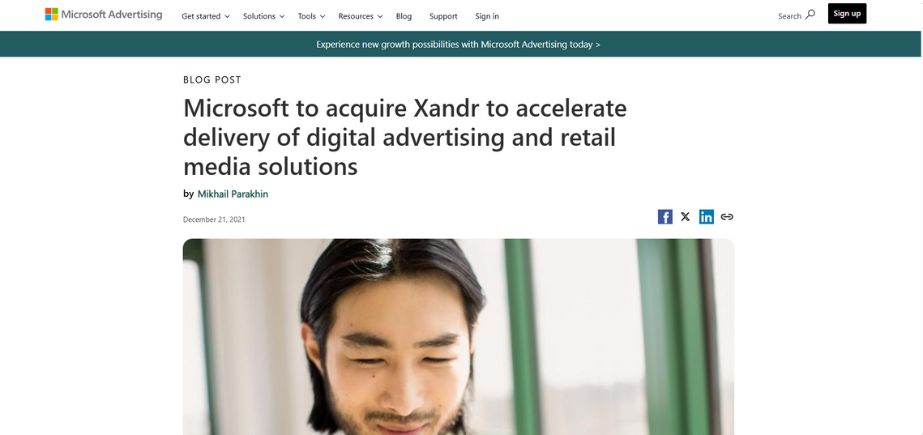
Xandr (previously, AppNexus) is a programmatic advertising platform owned by Microsoft. It offers demand and supply-side capacities that enable access to premium inventories in video, CTV, and display. The Invest DSP of Xandr enables real-time optimization of asset-level, scalable campaigns run by advertisers by using data. The company has an open ecosystem and is transparent, and Xandr can provide useful integrations of audience targeting, analytics, and reporting. Its high levels of representation on CTV and direct deals support it as an important option by video-first advertisers.
Key Features:
- Advanced programmatic marketplace technology
- Microsoft’s search and audience data integration
- Cross-screen campaign management
- Sophisticated yield optimization tools
- Curated marketplace for premium inventory
Pros:
- Strong technical infrastructure and reliability
- Access to Microsoft’s data and inventory
Cons:
- Complex platform requiring technical expertise
- Ongoing integration challenges post-acquisition
Pricing:
Variable pricing based on services used; DSP fees typically 10-20% of media spend.
Website:
https://xandr.com
7. Verizon Media (Yahoo DSP)
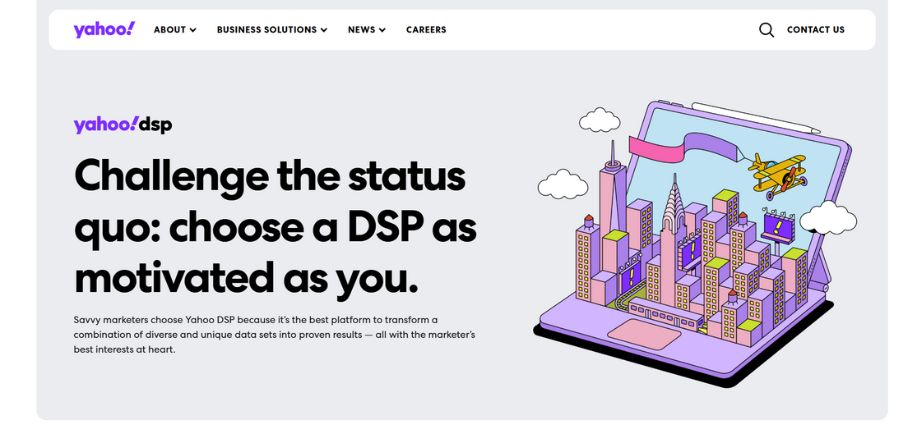
Verizon Media DSP (since 2020 Yahoo DSP) provides programmatic media purchasing on display, native, video, mobile, and connected TV. And when it has access to millions of first-party data points on Yahoo, it can do that conveniently through targeting and personalization. The platform has premium inventory, artificial intelligence optimization tools, and in-depth reporting support. It is one of the advertiser-friendly programmatic advertising platforms, which has an excellent track record in terms of transparency and brand-safe environment, assists advertisers in creating meaningful user experiences and optimizing campaigns and device interconnectivity efficiently in privacy-considerate manners.
Key Features:
- Access to Yahoo, AOL, and TechCrunch inventory
- Advanced mobile and app advertising tools
- Native advertising capabilities
- Verizon’s telecom data for targeting
- Cross-device identification and tracking
Pros:
- Strong brand-safe inventory
- Competitive pricing for premium placements
Cons:
- Limited reach compared to larger platforms
- Uncertain future following recent ownership changes
Pricing:
Platform fees typically 15-25% of media spend, with minimum commitments required.
Website:
https://yahooadvertising.com
8. SmartyAds
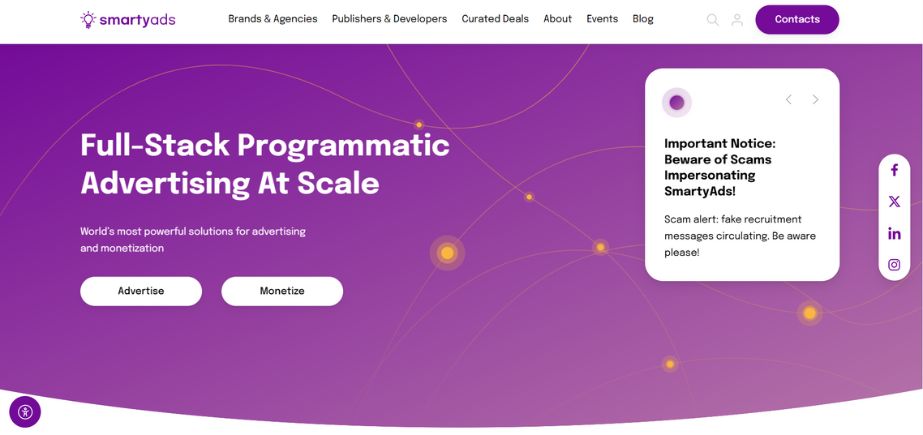
SmartyAds is one of the full-stack programmatic advertising platforms that provides DSP, SSP, ad exchange, and white label solutions. It promotes multi-channel campaigns on mobile, display, native, CTV, and DOOH (digital out-of-home). SmartyAds offers both advertisers and publishers customizable tools, superior targeting, and real-time analytics. The automation aids in increasing ROI and simplifying media buying, which is enabled by AI. SmartyAds is perfect in cases of businesses that want flexibility and scalability and suits agencies, ad networks, and enterprises interested in creating or developing programmatic capabilities.
Key Features:
- White-label DSP and SSP solutions
- Multi-format ad support (display, video, native, CTV)
- Real-time reporting and analytics
- Customizable bidding algorithms
- Self-serve and managed service options
Pros:
- Flexible pricing for small to medium businesses
- Customizable platform features
Cons:
- Smaller inventory scale compared to major platforms
- Limited advanced AI optimization features
Pricing:
Starting from $0.01 CPM with various pricing models; white-label solutions from $5,000+ setup fee.
Website:
https://smartyads.com
9. Amobee
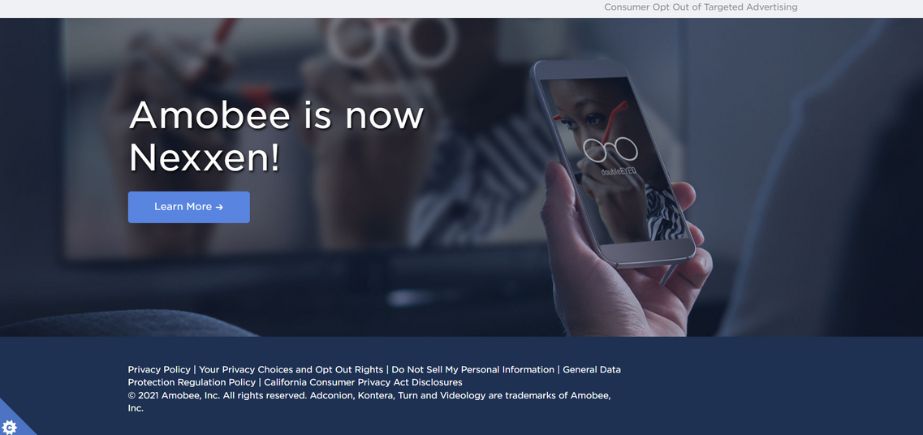
Amobee is among the best programmatic advertising platforms that integrates TV, digital, and social media campaigns into one screen. It supports cross-screen targeting, data management, and powerful analytics to have an all-purpose glimpse of campaign performance. Amobee is based on proprietary information and integrations with the big platforms that allow accurate segmentation of the audience and omnichannel audiences. Amobee boasts solid video and television advertising capabilities, and it is known worldwide for working with global brands to combine their linear and digital strategies into a single smart solution.
Key Features:
- Unified campaign management across all channels
- Advanced brand safety and verification tools
- Social media advertising integration
- TV and digital convergence solutions
- Predictive analytics and optimization
Pros:
- Comprehensive omnichannel approach
- Strong brand safety features
Cons:
- Higher costs for full-service offerings
- Complex setup and implementation
Pricing:
Contact for custom pricing; typically includes platform fees and service charges based on spend levels.
Website:
Front Page
10. Quantcast
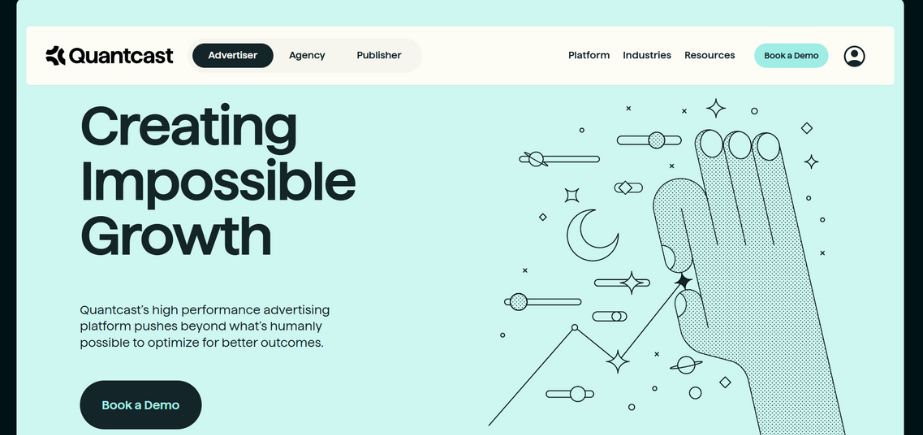
Quantcast is one of the AI-powered programmatic advertising platforms which is characterized by real-time audience insights and perspective targeting. It uses its own proprietary products- Quantcast Measure and Quantcast Platform by enabling marketers to plan, activate, and manage the digital campaign on display, video, and mobile. With the assistance of its machine learning engine, Ara, Quantcast understands enormous behavioral information and provides highly relevant ads, thereby generating higher ROI. It places cookies in the past; its cookieless technology and respect for privacy make it a future-proof solution to performance-oriented brands and agencies.
Key Features:
- Real-time audience measurement and insights
- AI-powered lookalike audience creation
- Cross-device identity resolution
- Predictive audience modeling
- Comprehensive brand safety controls
Pros:
- Unique audience intelligence capabilities
- Strong AI and machine learning features
Cons:
- Limited inventory compared to larger DSPs
- Primarily US-focused with limited global reach
Pricing:
Platform fees typically 15-20% of media spend; audience data licensing available separately.
Website:
https://quantcast.com
How to Choose the Right Programmatic Advertising Platforms for Your Business
To choose the best programmatic advertising platforms, you will have to consider very carefully your business requirements, financial reach, and advertising goals.
Budget and Scale Considerations:
Greater in terms of minimum spend (e.g., enterprises such as Google DV360 and The Trade Desk) boast additional capabilities and access to high-quality inventories. Smaller organizations are advised to work with an option such as SmartyAds or use self-service programmatic capable opportunities offered by Amazon DSP, which accepts lower budget volumes.
Advertising Goals and Objectives:
Amazon DSP provides e-commerce businesses with buying information and purchase intent segmentation, whereas brand advertisers may be interested in The Trade Desk’s transparency and cross-channel possibilities. The campaign is very heavy in creative works with the integration of Adobe Advertising Cloud with creative tools.
Audience Reach and Targeting Requirements:
Take into consideration the media habits of your target audience and their media choice. Programmatic advertising platforms like Google DV360 performs especially well on YouTube and Google ecosystem capacity, whereas utilizing third-party data is broadly available, e.g., in MediaMath.
Technical Resources and Expertise:
Certain platforms might demand a lot of technical skills and human resources from teams. Decide on the strengths of your team and weigh the possibility of using managed services and self-service activities.
Integration Requirements:
Think about how the platform integrates with your current marketing technology stack, which includes analytics tools, customer data platforms, and creative management systems.
Conclusion
The programmatic relationship between audience and advertisement (after 2025) offers incomparable potential in terms of sensitive and satisfying accuracy of audience targeting. The best programmatic advertising platforms discussed above have various strengths that are designed to support different advertising objectives. The Trade Desk and Google DV360 provide sophisticated AI powers to enterprise advertisers. Amazon DSP is one of the factors that should be considered in e-commerce branding due to its profound penetration of information on behavioral shopping.
MediaMath, Adobe Advertising Cloud, or Xandr can be more suitable than newcomers, who can use more user-friendly options, such as SmartyAds or self-service capabilities of Amazon DSP. The key to programmatic success lies in the use of smart platforms, consistent optimization, and responding to changes in privacy. Optimal AI, cookieless, and formats, such as CTV, will be increasingly used, and they should result in greater ROI and deeper connections with the audience.
Frequently Asked Questions
1. What do DSP and SSP mean?
An advertisement that uses a demand-side platform (DSP) enables an advertiser to purchase ad space programmatically with an advertiser-facing interface, and a supply-side platform (SSP) enables a publisher to sell ad space via an ad publisher interface. DSPs enable advertisers to reach their target audiences through various publishers, and SSPs enable the publishers to maximize their ad income by linking them to various sources of demand.
2. Is programmatic marketing suitable for small businesses?
Yes, most programmatic devices these days may have the self-service economy and reduced minimum spends with the explicit intention of small businesses. Smaller advertisers can make use of programmatic technology through the use of platforms such as SmartyAds, the self-service feature on Amazon DSP, and other white-label services.
3. Is programmatic advertising economical?
When correctly applied, programmatic advertising can be very cost-effective. Automation lowers manual labor costs, and the advanced algorithms built on targeting and optimization opportunities allow minimizing ad cost waste. ROI should, however, be calculated in accordance with platform fees, the need for quality data, and creative resources.
4. What are the ideal programmatic advertising platforms to advertise to users with mobiles?
The majority of contemporary programmatic platforms provide powerful mobile advertising services. Nonetheless, well-regarded mobile-first ecosystems will be The Trade Desk, being able to target large mobile audiences, Amazon DSP as a tool specifically dealing with mobile applications; and Google DV360 because of its connection to mobile application inventories via AdMob.
5. How do I track the performance of a campaign on programmatic advertising platforms?
The parameters to measure success ought to be consistent with your campaign goals and might comprise cost per acquisition (CPA), the rate of ad return (ROAS), the levels of viewability, the rate of brand lift, and the rate of conversion. The majority of the platforms offer full analytics dashboards, and connecting with third-party measurement tools can help to receive extra insight, as well as prove the success of the campaign.
